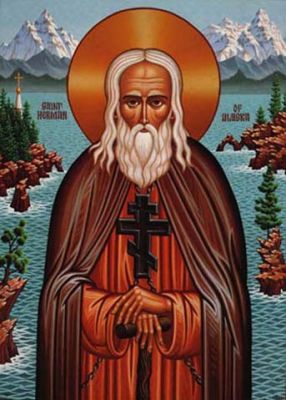 A strange thing happened on Sunday as I cruised around the online newspaper world. I ran into a mini-wave of coverage of Eastern Orthodoxy.
When I hit the first story, in The Washington Post, I thought to myself: "Behold! Someone in this newsroom has timed this local story about Orthodox converts for this date, knowing that there is a national or even international Orthodox news hook available to make it timely."
A strange thing happened on Sunday as I cruised around the online newspaper world. I ran into a mini-wave of coverage of Eastern Orthodoxy.
When I hit the first story, in The Washington Post, I thought to myself: "Behold! Someone in this newsroom has timed this local story about Orthodox converts for this date, knowing that there is a national or even international Orthodox news hook available to make it timely."
And what is that news hook? Well, here is the top of the Associated Press report by Rachel Zoll that has run in many newspapers during the past few days.
American Orthodox Christian leaders will hold their third joint meeting this week, a gathering aimed at strengthening ties among their churches, which began splintering along ethnic lines a century ago.
But the chance is small to nonexistent that the movement will take up unifying into one U.S. church – the dream of some laity and clergy – at the meeting of the Standing Conference of Canonical Orthodox Bishops in the Americas.
This Chicago conference is a rather big deal, even if it does not lead directly to the creation of one united Eastern Orthodox flock in North America. What it might do is show which churches truly want this step to take place and which do not. It may also lead to some of the Orthodox bodies working harder on united projects in missions, education and evangelism.
So I was thinking that the Post mini-feature by Timothy Wilson about the local St. Nicholas Orthodox Cathedral must be linked to this highly symbolic moment, seeing as how this is the national cathedral of the Orthodox Church in America.
As it turned out, the story contained some nice details about architecture and iconography, but not a single word about the Chicago meeting. It was a nice little story, but it did not contain the news of the day.
A few minutes later, I ran into a much more ambitious story in the Los Angeles Times – dateline Tatitlek, Alaska – by Sam Howe Verhovek. The headline proclaimed: "In Alaska, a Tradition of Russian Faith: Those who brought the Orthodox church here are long gone, but the diocese is thriving."
Well now, I thought, what an interesting way to approach the story. To put a frame around the importance of the Chicago meetings, the paper of record on the West Coast has elected to dig all the way back to the birth of the Orthodox faith in this land (set aside the trailblazing work of St. Brendan of Ireland for a moment).
Alas, no – writers and editors behind this story also seem to have had no idea that the Chicago meeting was about to take place. This is a crying shame, since the Verhovek piece contains so many fine details about the past. It would have been nice to see this story linked to the future.
In nearly 100 villages and towns along the Alaskan coast, from the tip of the Aleutian Islands to the onetime Russian-American capital of Sitka, the Russian Orthodox churches remain the most visible – often the most colorful – man-made landmarks. ... Although many of the people who care for the churches have names like Totemoff, Kompkoff, Gregoriev and Vlasoff, they do so with a curious distinction: They have little or no Russian blood.
"Many of us have never even seen a Russian," says Gary Kompkoff, the elected village chief in Tatitlek, letting out a small laugh. "Most of us are full-blooded Aleut. It was very long ago that the Russians were here, of course."
The diocese's modest growth is almost all in the Anchorage area, where it has opened five new churches in the last decade as well as a museum that tells the tale of the faith in Alaska. The church's leader here is the Right Rev. Bishop Nikolai, the bishop of Sitka, Anchorage and Alaska. ...
The bishop, who formally uses just one name, says the Alaska diocese has also invested in its St. Herman seminary on Kodiak Island. It is named for a man who was among the first 10 Russian monks to come to Alaska, in 1794, and who became North America's first Orthodox saint.
Like I said, this is a story that could have had a strong news hook – only it does not appear the anyone in the newsroom knew that.
Image: St. Herman of Alaska
